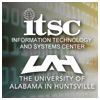An Integrated Approach for Accessing Multiple Datasets through LANCE
| Title | An Integrated Approach for Accessing Multiple Datasets through LANCE |
| Publication Type | Conference Proceedings |
| Year of Publication | 2011 |
| Authors | Murphy, K, Teague, M, Conover, H, Regner, K, Beaumont, B, Masuoka, E, Vollmer, B, Theobald, M, Durbin, P, Michael, K, Boller, R, Schmaltz, J, Davies, D, Horricks, K, Ilavajhala, S, Thompson, C, Bingham, A |
| Conference Name | 2011 Fall Meeting AGU |
| Date Published | 12/2011 |
| Conference Location | San Francisco |
| Keywords | geoinformatics, real-time informatoin delivery |
| Abstract | The NASA/GSFC Land Atmospheres Near-real time Capability for EOS (LANCE) provides imagery for approximately 40 data products from MODIS, AIRS, AMSR-E and OMI to support the applications community in the study of a variety of phenomena. Thirty-six of these products are available within 2.5 hours of observation at the spacecraft. The data set includes the population density data provided by the EOSDIS Socio-Economic Data and Applications Center (SEDAC). The purpose of this paper is to describe the variety of tools that have been developed by LANCE to support user access to the imagery. The long-standing Rapid Response system has been integrated into LANCE and is a major vehicle for the distribution of the imagery to end users. There are presently approximately 10,000 anonymous users per month accessing these imagery. The products are grouped into 14 applications categories such as Smoke Plumes, Pollution, Fires, Agriculture and the selection of any category will make relevant subsets of the 40 products available as possible overlays in an interactive Web Client utilizing Web Mapping Service (WMS) to support user investigations (http://lance2.modaps.eosdis.nasa.gov/wms/). For example, selecting Severe Storms will include 6 products for MODIS, OMI, AIRS, and AMSR-E plus the SEDAC population density data. The client and WMS were developed using open-source technologies such as OpenLayers and MapServer and provides a uniform, browser-based access to data products. All overlays are downloadable in PNG, JPEG, or GeoTiff form up to 200MB per request. The WMS was beta-tested with the user community and substantial performance improvements were made through the use of such techniques as tile-caching. LANCE established a partnership with Physical Oceanography Distributed Active Archive Center (PO DAAC) to develop an alternative presentation for the 40 data products known as the State of the Earth (SOTE). This provides a Google Earth-based interface to the products grouped in the same fashion as the WMS. The SOTE servers stream imagery and data in the OGC KML format and these feeds can be visualized through the Google Earth browser plug-in. SOTE provides visualization through a virtual globe environment by allowing users to interact with the globe via zooming, rotating, and tilting. In addition, SOTE also allows adding custom KML feeds. LANCE also provides datacasting feeds to facilitate user access to imagery for the 40 products and the related HDF-EOS products (available in a variety of formats). These XML-based data feeds contain data attribute and geolocation information, and metadata including an identification of the related application category. Users can subscribe to any feeds through the LANCE web site and use the PO DAAC Feed Reader to filter and view the content. The WMS, SOTE, and datacasting tools can be accessed through http://lance.nasa.gov |
- Log in to post comments
- Google Scholar




